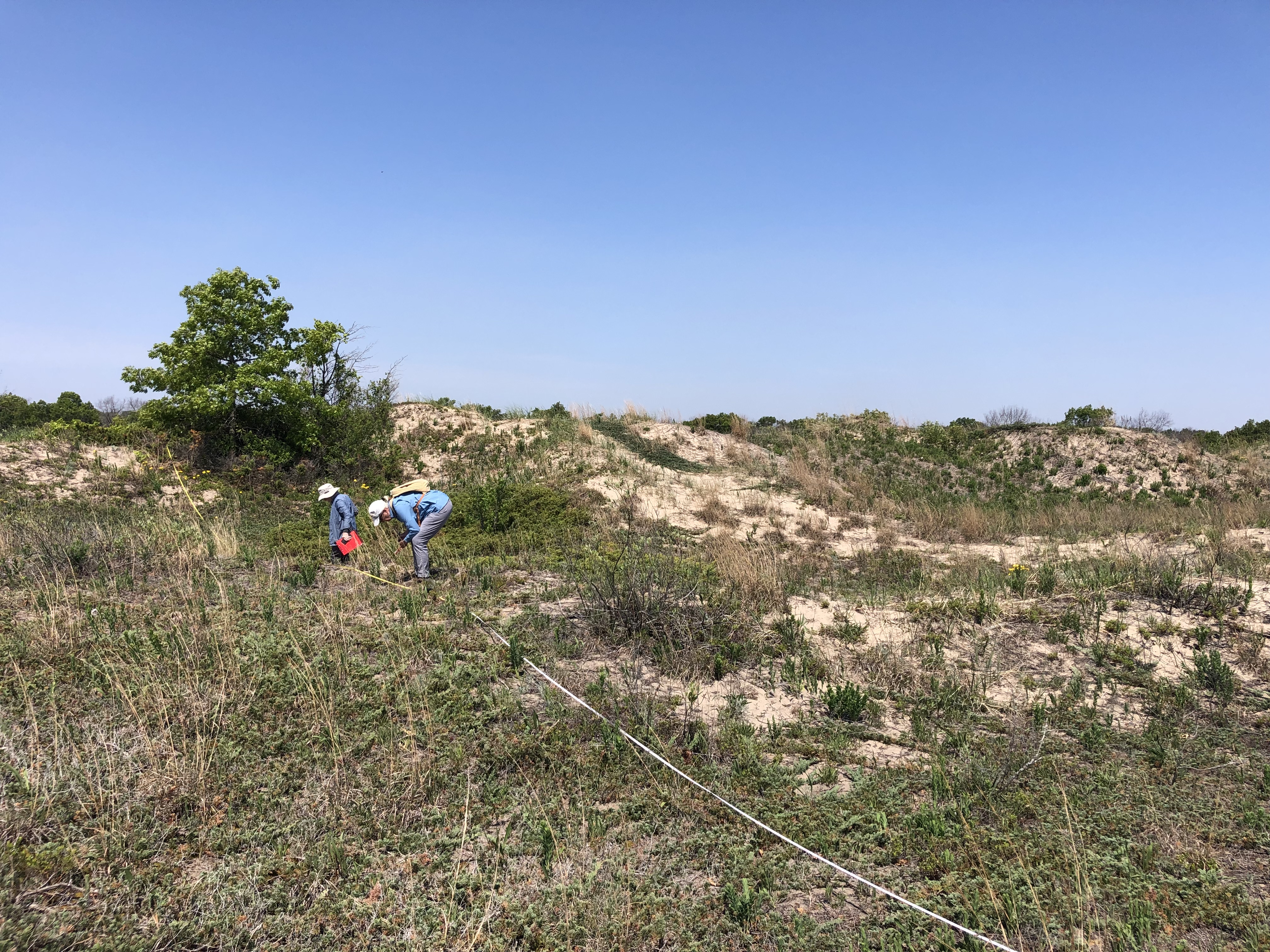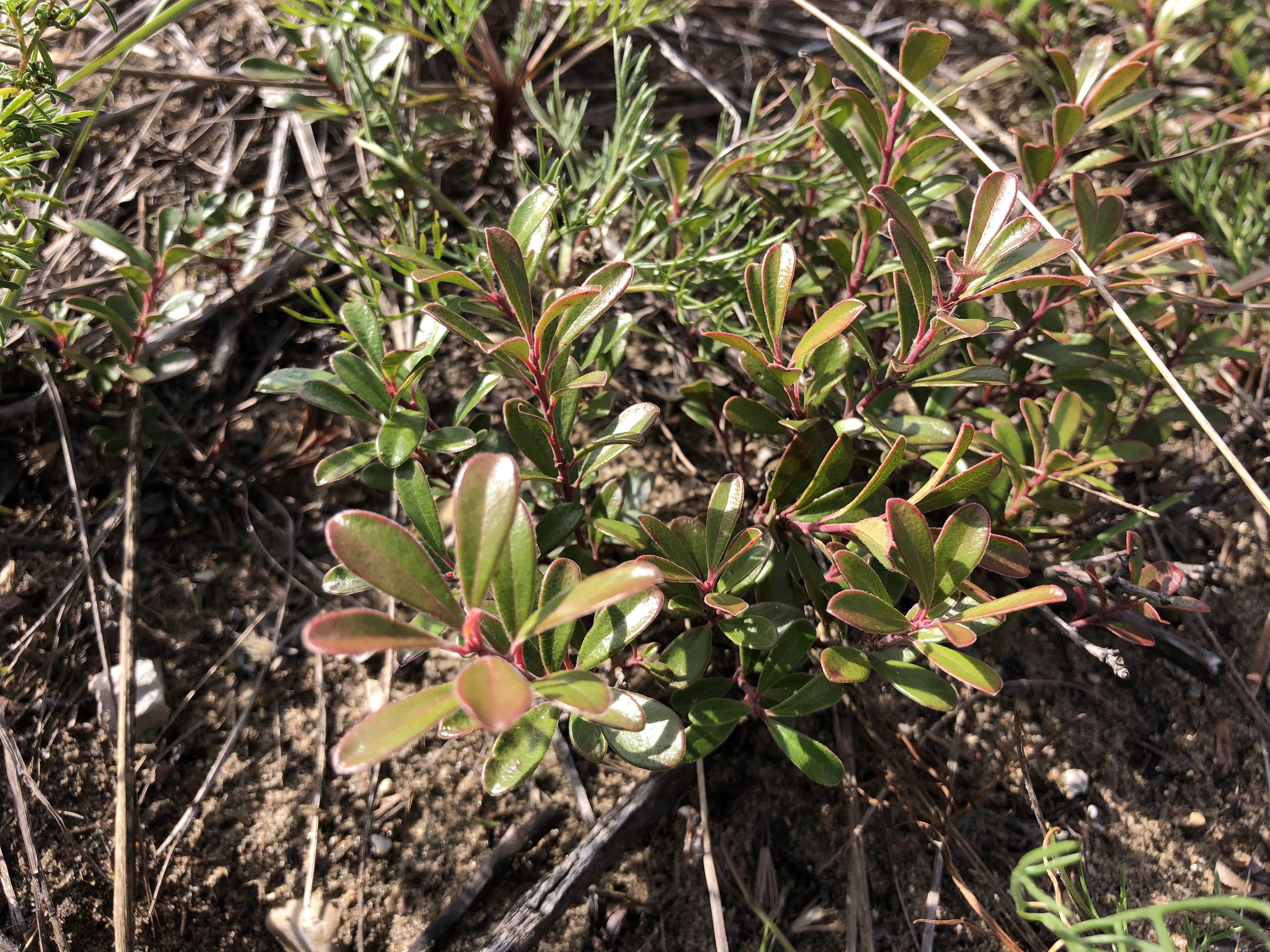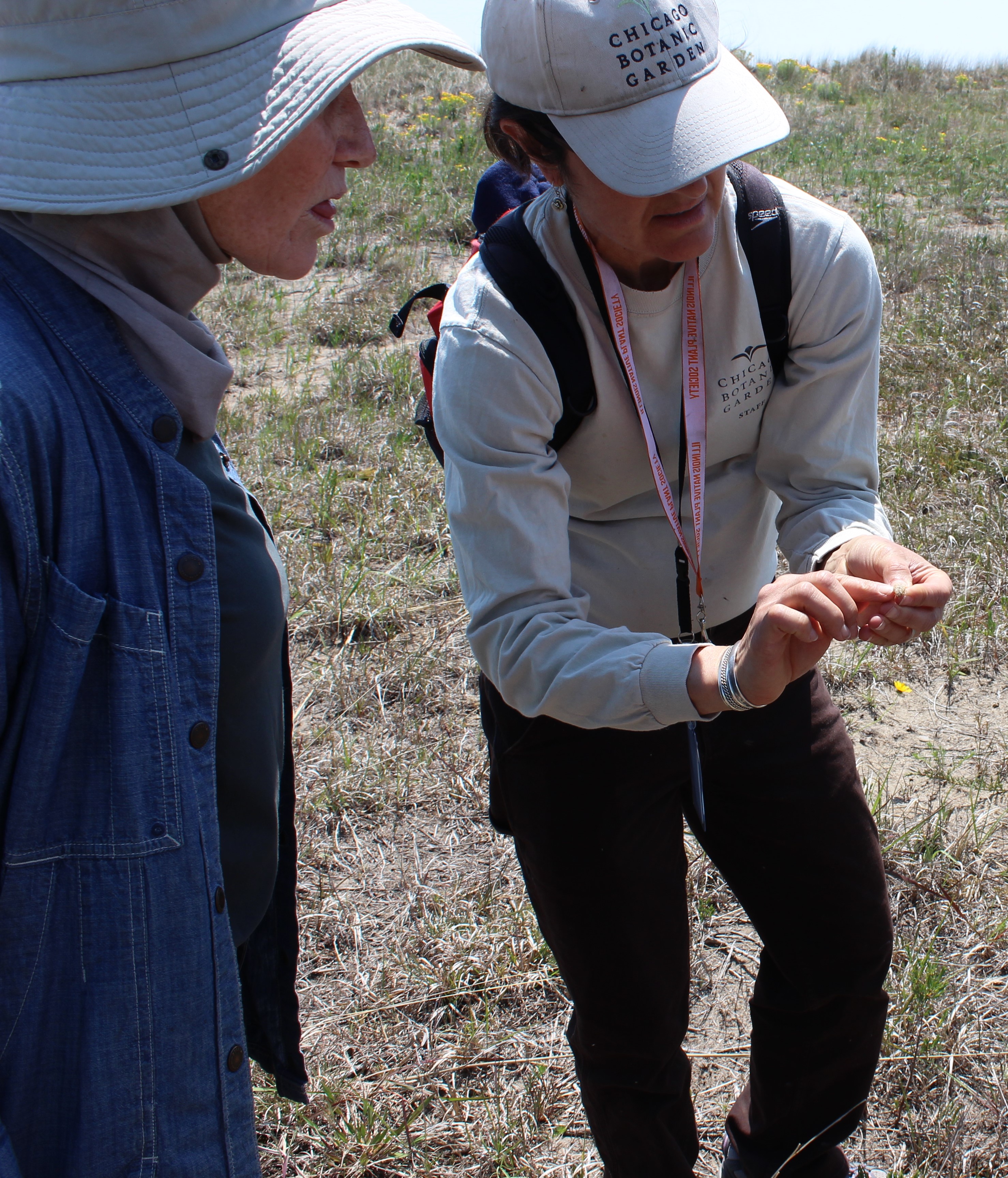by Grant Fessler, Plants of Concern Research Assistant, Midewin National Tallgrass Prairie
It was a cool, early-June morning, and Plants of Concern Program Manager, Gretel Kiefer, and I had just arrived at Illinois Beach State Park. Stepping out of our vehicle into the parking lot, we were greeted by bright, bluebird skies overhead and a gentle breeze blowing in from Lake Michigan. It was a delight to set foot once again at Illinois Beach. This 4,000+ acre preserve contains the last remaining stretch of natural Lake Michigan shoreline in the state. Few, if any, remnant natural areas of comparable size, diversity, and ecological health can still be experienced in Northeastern Illinois. We stretched our legs and gathered our supplies for the day as we awaited the arrival of several volunteers who would join us for a morning of botanical exploration and rare plant monitoring.
Once everyone arrived and introductions were made, we set forth from the parking lot and entered the surrounding black oak sand savanna. To either side of us stood widely spaced Black Oak trees (Quercus velutina), many of which were gnarled and stunted with fire-pruned lower limbs. Beneath and between the Black Oaks, an impressive diversity of plant species could be seen. There, we encountered characteristic sand species such as Rock Sandwort (Sabulina michauxii), Green Comet Milkweed (Asclepias viridiflora), Butterfly Milkweed (Asclepias tuberosa), Prairie Redroot (Ceanothus herbaceus), and Porcupine Grass (Hesperostipa spartea). We also noted three species of Puccoon: Hoary Puccoon (Lithospermum canescens), Fringed Puccoon (L. incisum), and Hairy Puccoon (L. caroliniense), the latter of which still bore its orange-yellow blooms. Commanding center stage, however, was Sundial Lupine (Lupinus perennis) whose tall, blue flower spikes contrasted marvelously with its yellow-petaled counterpart, Sand Coreopsis (Coreopsis lanceolata). Prescribed burns conducted by the park’s managers in early spring of this year likely helped usher in such a full and colorful display.
Top: Lupinus perennis in bloom. Bottom: Blooming Lupinus and Coreopsis accompanied by Anemone cylindrica, Hesperostipa spartea, and Equisetum hyemale affine. Photos by Grant Fessler.
Emerging from the dappled sunlight of the savanna, we stepped out onto the bright sand prairie which lay between the oaks and the lake. We caught glimpses of blue-green lake water behind the undulating dunes and swales that stretched out before us. The low, sparse vegetation on the open sand contrasted sharply with that of the savanna. Wands of Prairie Junegrass (Koeleria macrantha) swayed in the breeze alongside silvery-gray leaves of Beach Wormwood (Artemisia campestris caudata). Here and there were small bunches of little bluestem (Schizachyrium scoparium) mixed with Purple Prairie Clover (Dalea purpurea), Prickly Pear (Opuntia cespitosa), and rosettes of Rough Blazing Star (Liatris aspera). Occasional shrubs such as Sand Cherry (Prunus pumila), Shrubby Cinquefoil (Dasiphora fruticosa), and Kalm’s St. John’s Wort (Hypericum kalmianum) added structure to the otherwise short vegetation. Closer to the lake, the dunelands were carpeted in many places by low, sprawling evergreen shrubs. This shrub-covered area was our first destination for the day.
 Plants of Concern volunteers monitor Arctostaphylos uva-ursi and Juniperus horizontalis via the line intercept transect method.
Plants of Concern volunteers monitor Arctostaphylos uva-ursi and Juniperus horizontalis via the line intercept transect method.
Two species were responsible for creating this dune “carpet” — Bearberry (Arctostaphylos uva-ursi) and Creeping Juniper (Juniperus horizontalis). Both are denizens of much more northern latitudes, but here they exist as glacial relics restricted to open, often sandy high-quality habitats. Plants of Concern has monitored these populations every 5 years or so, since 2007, and it was time to visit them again. Using GPS to locate transect start and end points, we laid out meter tapes and got to work!
 The evergreen Bearberry (Arctostaphylos uva-ursi) with Beach Wormwood (Artemisia campestris caudata) growing on open sand.
The evergreen Bearberry (Arctostaphylos uva-ursi) with Beach Wormwood (Artemisia campestris caudata) growing on open sand.
Along the transect, we recorded the length of tape that intercepted each species. This is known as the line intercept method and is one way of accurately estimating species cover. With thirteen long-term monitoring transects at this site, we can compare estimated cover values of both species over time to get a deeper understanding of how they are faring.
Once we wrapped up our transect work, we packed up and made our way northward to our next destination.
Our second mission of the day brought us to a population of Dune Willow (Salix cordata, synonym: S. syrticola), which Plants of Concern and Illinois Department of Natural Resources have worked together to save since 2020, after a POC volunteer noticed that the population was being lost to lakeshore erosion and flooding (see here for the backstory). Last fall, Plants of Concern staff and volunteers planted Dune Willows grown from cuttings of remnant plants at ILBSP — clones — to bolster population numbers. On this visit, we wanted to detect if any of the current population produced seed.
Searching for willow seeds is not as straightforward as it may sound. Nearly all willows (Salix spp.) are dioecious — meaning individual plants are either male or female. So first, we were tasked with determining each found individual’s sex, as only females can bear seed. After close examination of several plants, we finally located a female Dune Willow with ripe fruit!

Top: Seed from female Salix cordata individual being collected for propagation. Middle: Plants of Concern Program Manager, Gretel Kiefer, showing volunteers a male Dune Willow flower (catkin). Bottom: Gretel and volunteers inspecting Dune Willows for seed.
Similar to that of our abundant Cottonwood tree (Populus deltoides), Dune Willow seed is encased in a white cottony substance that allows it to easily float on the breeze. The seed we collected went to the Chicago Botanic Garden’s propagation team where it could be germinated and grown out for planting back along the dunes. Introducing individuals grown from seed is critical for increasing genetic diversity in this population.
By introducing clones and genetically unique individuals, we hope to ensure that Dune Willow has a future at Illinois Beach State Park.
With our tasks for the day completed, our group meandered back to the parking lot and said farewell. A big thanks goes out to the lovely volunteers who contributed their time and joined in a wonderful day of exploration and monitoring! It doesn’t get much better than spending your day in a beautiful place like Illinois Beach with great people, appreciating great plants.
To learn more about Plants of Concern and to become a rare plant monitor visit plantsofconcern.org. Be sure to sign up for our newsletter to stay informed about what we are up to and to hear about future events like this one!